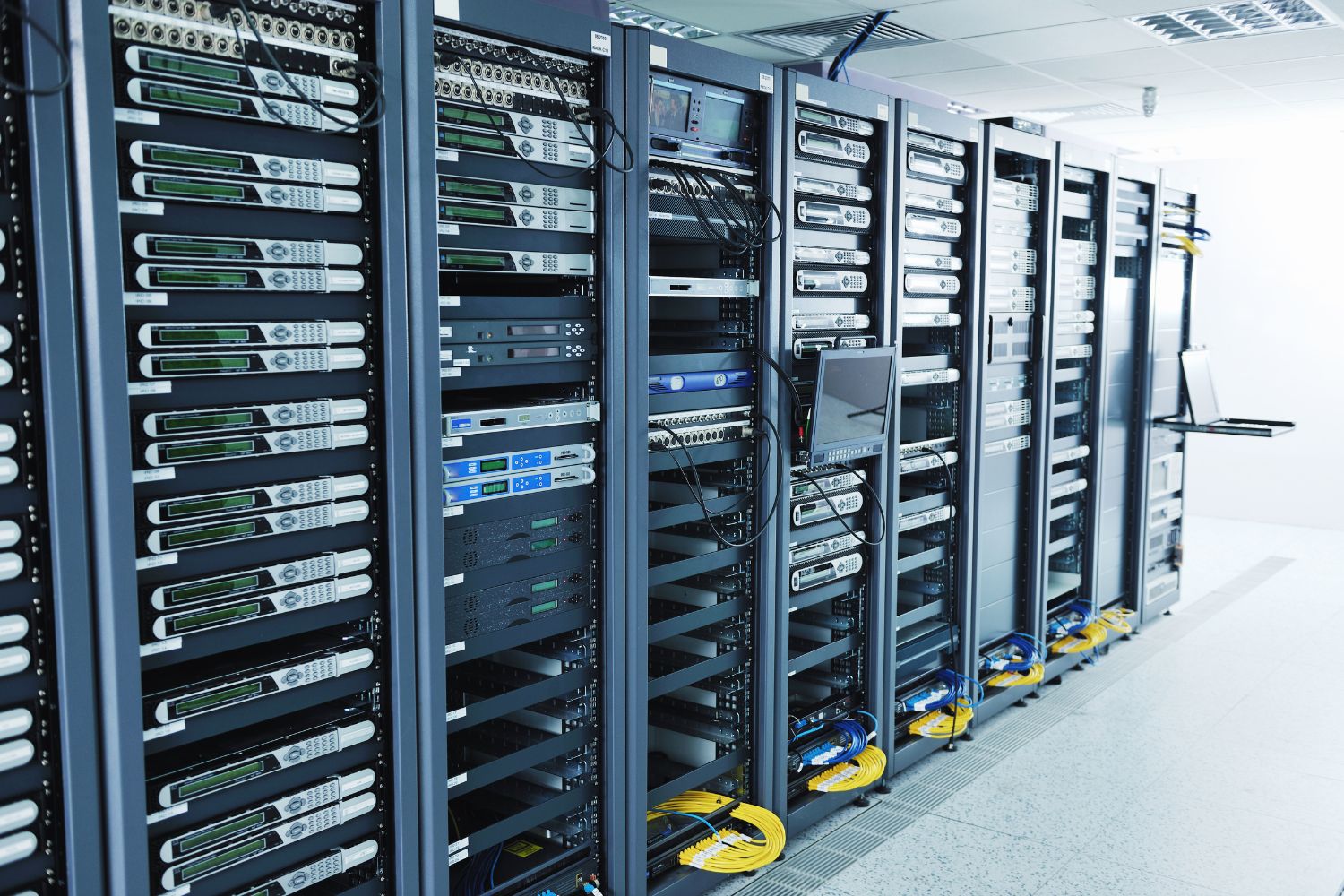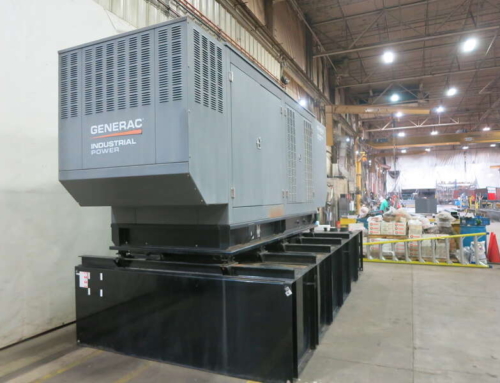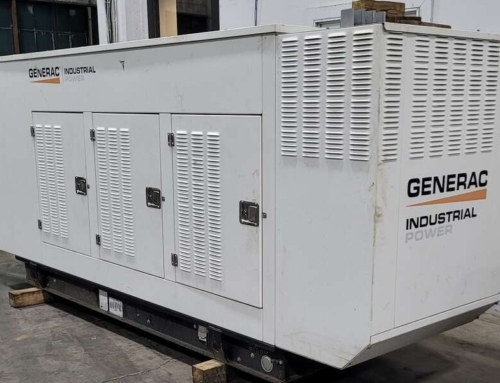Data center generators are backup machines that supply power when the main source of power supply fails. Power disruptions such as utility grid failures, rolling blackouts, storms, natural or artificial disasters or electrical failures may have a severe effect on data centers and their applications.
Data center systems and components have to function continuously, hence the need for a reliable power supply that should not be interrupted for more than a day or part of the day at a time. Files can be lost or can become corrupted, mainframes can malfunction, and that can result in lost profits if there is any lapse in power.
However, high power spikes are inevitable in most data center components due to the switching from normal to emergency power supplies. This implies that when any of the components of the total system loses power, even for a single moment, a total system restart is inevitable. This results in system downtime, potential startup issues, corrupted files, and even loss of the information that was being processed at the time.
What is Data Center Redundancy?
Data center redundancy is the duplication of hardware to eliminate the risk of downtime from failure and the availability of hardware for maintenance. However, due to the fact that power supply problems cause 43% of major data center outages, according to the Uptime Institute 2022 report, UPSes and generators, among others, are the primary areas for redundancy.
What are the Data Centre Redundancy Levels?
The process of implementing data center redundancy may vary from one organization to another. The costs of implementing redundancy increase significantly with every additional component. In order to determine the appropriate configuration for your organization, it is essential to be aware of the strengths and weaknesses of each architecture, including N, N+1, N+2, 2N and 2N+1.
Note that a given data center may have multiple redundancy models. UPS may be 2N, while the cooling system may be a N+1 configuration. The cooling system can be N+1 and still have a single point of failure in the piping. All power whips should be 2N, thus creating upstream redundancy, and if a single power whip is deemed to be necessary, then the UPS configuration would no longer be N+1 or 2N but rather a single point of failure.
All of these redundant architectures, plus the use of an automatic transfer power design, help to reduce interruptions as well. A redundant system design involves an automatic transfer that allows the booster system to switch capacity to the specified alternative power source when the primary dies. The automatic transfer power design can be achieved using an Automatic Transfer Switch (ATS) or logic-controlled switchgear. This eliminates the delay that may be experienced when a technician has to switch to the secondary unit physically.
The Importance of Data Center Redundancy
Since data centers have become vital, the importance of data center redundancy has also heightened. The uninterruptible power supply is one of the most crucial elements of the redundancy system in a data center. It is important to have a backup power generator for the data center since generator failure is one of the leading causes of downtime.
There are several reasons why generators are considered to be vital for data center redundancy.
- Generators offer a secondary source of power in case of loss of primary power supply.
- Generators are used to cater to data centers’ requirements for continuous downtime and data loss.
- Generators ensure that equipment in the data center is not exposed to power surges, which can be detrimental to the equipment.
- Generators assist data centers in conforming to compliance requirements.
- Generators enhance general system reliability for data centers.
These factors indicate the importance of generators in the redundancy plan of the data center. It is, therefore, imperative that data centers have a backup power generator to ensure that they minimize data center downtime.
Having a reliable backup power generator helps to reduce the number of hours or days a data center is without power, which can disrupt its operations.
Choosing the Right Generator
There are several factors to take into consideration before deciding on a generator and employing the best configuration for a data center. First, identify your data center tier based on the most common data center redundancy levels:
N redundancy
This level is the minimum that a system can supply to enable the facility to operate at full load condition or to provide the facility with full cooling capacity.
N+1 redundancy
This level is the standard level of resources required plus one more for contingency reduplication, and it can be viewed as a single redundancy solution.
N+2 redundancy
This level is an extension, which is the second level, where two separate backups are added to the base-level resources that are required for the system’s function. They may include two similar systems with a capacity of 100% of the required and 100% of the stranded capacity.
2N redundancy
Two times the resources and capacities of what is needed for an IT system to function.
3N/2 redundancy
The 3N/2 redundancy level of redundancy almost doubles the N reliability with N+1 capital and operating costs but with complicated loads.
2(N+1) redundancy
This level is referred to as the triple redundancy in a facility. This system is too expensive because it requires double the amount of electrical equipment and an additional UPS module for each side in the event of a single power failure and additional components in the event of failure of either of the two parallel systems.
Partner with CS Diesel for Reliable Backup Power Solutions
Backup generators have become a critical requirement in data centers for the sake of guaranteeing round-the-clock operations and protecting the concern from potential disruptions. With more companies becoming dependent on digital systems, careful attention must be paid to providing backup power sources for these systems.
To get the best backup generators and other advice on supporting a data center through a disaster, turn to CS Diesel Generators. Offering a versatile range of Backup Generators, CS Diesel ensures that business organizations fulfill their expectations by reducing risks, ensuring regulatory compliance, and maintaining customer confidence against unplanned events. Visit their website today to find backup power solutions.
Common Questions about Data Center Redundancy and Backup Generators
Q1. Why is data center redundancy important?
Data centers must be redundant in order to function continuously and reduce downtime. Organizations can design their systems to withstand hardware failures, power outages, and other failures by using redundant systems and components.
Q2. What are the main components of data center redundancy?
The main elements of data center redundancy include redundant power sources, network connections, hardware, and air conditioners. These redundancies are aimed at avoiding the formation of bottlenecks to avoid service disruption.
Q3. How do backup generators contribute to data center redundancy?
Emergency generators are like backup power systems that supplement the power supply from the power grids. They immediately start supplying power for the most important parts like servers and cooling devices, hence preventing cutoff and avoiding data loss.
Q4. What is the difference between UPS systems and backup generators?
UPS systems are designed to ensure temporary power failure or limited outages lasting from several minutes to one hour. The standby generators, on the other hand, can perform for long durations, hence making them ideal to deal with long power outages.
Q5. How long can backup generators run without refueling?
The runtime of backup generators without refueling mostly relies on factors like fuel capacity and load expectation. Generators with larger fuel tanks can operate for several days or even weeks without refueling if they are well taken care of.
Q6. Are backup generators noisy or disruptive to data center operations?
Contemporary standby generators emit considerably less noise and vibration and are a better fit for use in data centers. Moreover, soundproofing techniques and security cameras can help reduce the impact of the generators on the surrounding environment.
Q7. How do backup generators support disaster recovery efforts?
Generators are used for disaster recovery to keep the data centers working during and after disasters like hurricanes, earthquakes, and floods. They supply the required power to back up recovery efforts so that businesses can get back to their key functions in a timely manner.








